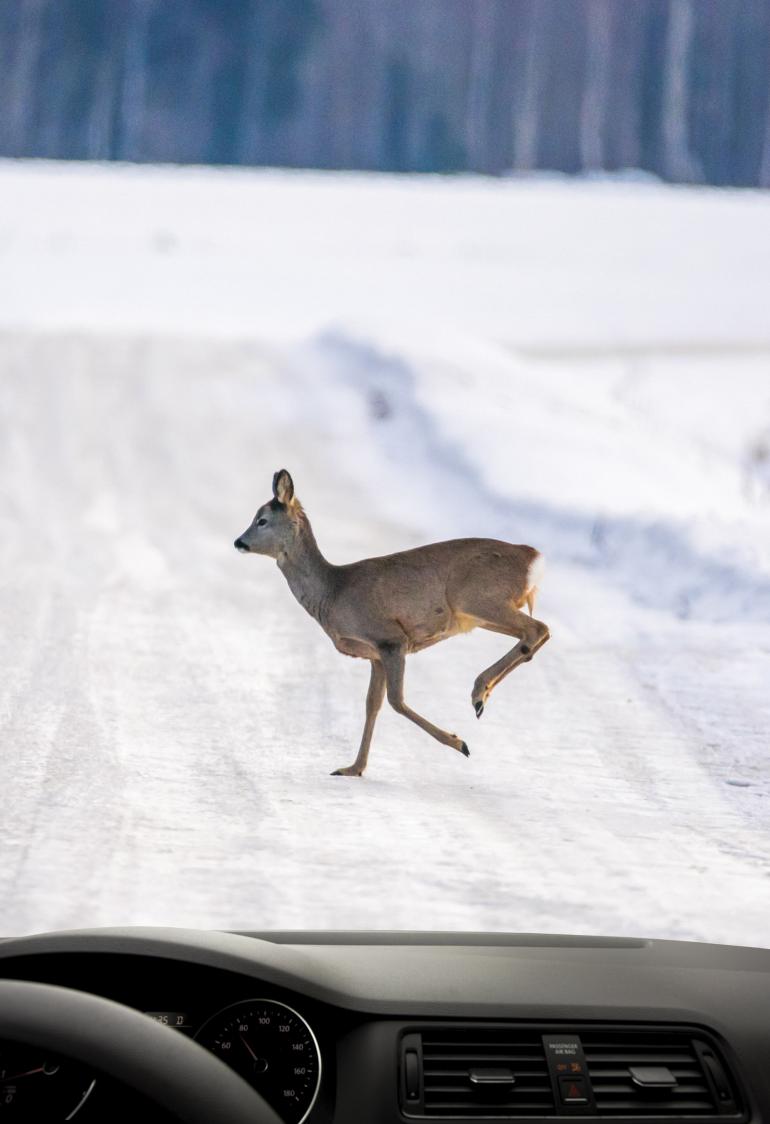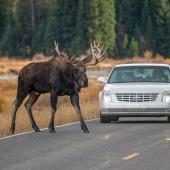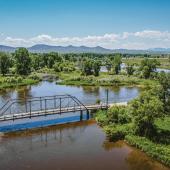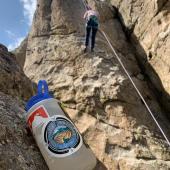Bumper Crop
Turning roadkill into table fare.
When life hands you lemons, make lemonade.
Hitting a deer or elk with your car is a bad situation no matter how you spin it. There’s the damage to the vehicle, the death of the animal, a time delay, and possible injury of the driver. Like it or not, this is a fact of driving life in Montana. But as terrible as it is, not everything has to be chocked up as a loss. Instead of laying to waste on the side of the road, that animal can still go on to feed a family through the winter. Enter the Wildlife Salvage Permit.
In 2013, the state Legislature passed a bill that legally allows for people to recover the meat, hide, hooves, and antlers of animals (deer, elk, moose, and antelope) killed by vehicles. This extends beyond the person who hit the critter. Anyone can apply for and obtain a permit. Here’s the low-down.
Things to Know
It’s free! There is absolutely no cost in acquiring a salvage tag.
The permit needs to be printed out and signed. If there’s law enforcement on scene, they can help you out with this. Otherwise, visit fwp.mt.gov to fill out the application.
You need the permit in hand no more than 24 hours after you take possession of the animal.
If salvaging, remove the entire animal from the immediate site. Gut piles and meat scraps put off a potent scent. Don’t butcher on the side of the road and put predators and scavengers at additional risk of being hit when they come smelling the fresh kill. Also know that carcass dumping is illegal in Montana and can accelerate the spread of Chronic Wasting Disease. Dispose of the entrails responsibly.
Carcass tags (i.e., hunting tags) are not applicable. The salvage tag is its own permit.
Tips & Tricks
Aside from actively trying to hit an animal, which I very much discourage, there are a few things you can do to remain prepared for a roadkill scenario.
PACK AHEAD OF TIME
If you’re low on meat and you know that a salvage tag is in your interest, put together a simple kit that allows you to deal with an animal at unexpected times. Such items should include tarp, knife, gloves, game bags, and a pair of clothes you can get bloody. Find an out-of-the-way spot in your vehicle and stow them year-round.
PUT THE WORD OUT
If you know people who routinely drive wildlife corridors—i.e. the Big Sky commute—make them aware that you’re looking for meat. They’ll know a fresh kill the day that it happens and can alert you of its location.
CONFIRM QUALITY
Obviously, if you’re the one who hit the animal, you know that it’s fresh. If not, inspect it using some general guidelines. Maggots and flies are red flags. If you see those buggers, back out. Trust your nose. If it smells rotten, it likely is rotten, and isn’t worth risking your health. Check the animal’s eyes. If they’re white and clouded, the carcass is less fresh than if they’re clear. Feel for temperature. A warm animal is fresh, and an animal killed in the winter will preserve much longer than one in mid-summer.
We can all agree that death by collision is a sad way to go. But even in a lemon-loaded situation, there’s still lemonade to be made. Or at least burgers, brats, and some steak dinners. I have a non-hunting friend who pointed out that the roadkill elk he salvaged was fresher than the one I shot with my rifle. “Yours sat out there for two days while you made trips back ’n’ forth packing it out,” he quipped. “Mine hit the ground at 9am and was in the freezer by noon.”
For the complete regulatory rundown, visit fwp.mt.gov.












